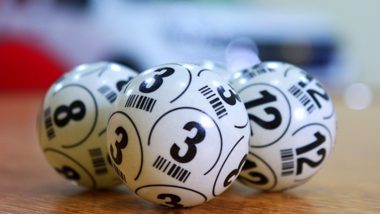The Powerball lottery is famous due to the number of previous winners and for offering large jackpots- sometimes those nearing half a billion dollars. What makes these pools of impressively large-sized jackpots is still a question that puzzles many and catches the attention of others. The anatomy of the Powerball jackpot is a complex thing, and getting to grips with it involves not only examining how it is built but also considering ticket sales and even understanding some basic mathematical principles upon which (theoretically) all lotteries are based.
The Powerball Structure
Powerball, one of America's popular lottery games is an easy to understand yet complex game. One of the biggest differences with Powerball is that players choose five numbers from a total pool of 69, and one Powerball number out of a pool made up of 26. The jackpot is in play for the player who match all five numbers and the Powerball. The odds of doing so are 1 in 292.2 million, this is indeed justified as they win the top prize” about 1 in 292.2 million. While the game is primarily an American lottery, You can also play Powerball from India or other countries nowadays with the help of various online lottery websites.
Ticket Sales and Jackpot Growth
Ticket sales is one of the biggest reasons Powerball jackpots have gotten so big. When you buy a ticket, it adds to the jackpot. The versatility of Powerball is that it's played in several states (44 at latest count) and each one sells millions of tickets, so the overall numbers are hard to calculate. The more tickets are sold, the higher the jackpot.
The more the number of tickets that are purchased, the more money gets to be contributed into the prize pool then as a result this will help in increasing up your jackpot amount. If no one wins the jackpot, it continues to grow until the next drawing is held. This rollover feature is what helps the jackpot grow into hundreds of millions.
How the Jackpot Grows
A rollover system is a good example of how Powerball jackpots booms into huge amounts. If there is no jackpot winner, the prize amount rolls over to next drawing. The rollover value is a fraction of the overall ticket sales made. Over time, these sums grow over several draws resulting in huge jackpot prizes.
As an example, if the jackpot goes unwon for many weeks on end, then the prize fund starts spiralling out of control and growing to gigantic sums. The more the jackpots accumulate, the faster they roll over as these high figures bring even greater player appeal which generates additional ticket sales and thus an increased overall prize pot.
The Role of Ticket Sales in Prize Pools
If you want a bigger jackpot, the ticket sales become more essential. Ticket sales, from which Powerball revenue flows to the jackpot (about 60-70 % of ticket-sales) and physical body engagement with game(remaining amount ranges between commission and administrative costs), are used by each member lottery. The way a lottery is set up, some part of the money you pay for each ticket goes into this jackpot pool. The rest goes to lower-tier prizes and administrative costs, with some state funding.
Lottery earnings also generally help pay for public programs and initiatives, with many states embarking lottery funds to be used towards projects on a community level. This mixed-bag model of rolling out revenues serves two basic purposes: It retains the multiplayer factor that makes each state lottery irresistible and aids in repurposing revenue for public good.
The Mechanics of the Jackpot
The details of how the Powerball jackpot is calculated are a complicated mix, of basic math and economics. Jackpot odds, however are determinable by the number of all possible combinations. This huge number is one of the reasons why its jackpot gets to such enormous amounts. The game is enticing to many players, because a lot of them are drawn in by the long odds and therefore ticket sales — thus those big jackpots.
The money in the pot is raised crowd-funded from ticket sales, profits of accumulated prizes which do not get claimed and also further interest earned on this reserve. These financial structures help ensure the jackpot stays high and attracts players.
Managing Jackpot Growth
To control the increase in jackpot, Powerball uses a mix of measures to do so. For instance, a base jackpot sum is established initially. Nobody wins, the prize pool goes up and this is how a jackpot can grow. That process keeps on going and is reapeted until there is the winner or when the jackpot reaches a certain cap, after which it goesback to lower amount fill.
Furthermore the game has been designed so even though jackpots can roll over to sky-high amounts, there are still large prizes available for lower tier winners. This balance between the jackpot and lower-tier prizes is crucial for interesting to players in playing at all.
Conclusion
There are three main reasons those Powerball jackpots have reached the hundred-million-dollar range: a mix of ticket sales, rollovers and math. And it has the structure of a game as well as media dynamism to ensure they sustain these giant prize pots. Although the allure of winning a massive jackpot is compelling, Powerball (like all lotteries) remains above all else a game of chance. It requires just some luck to win. Knowing the mechanics can make you enjoy of playing, but that is as long until you remember how random winning and losing pretty much gets.
(All articles published here are Syndicated/Partnered/Sponsored feed, LatestLY Staff may not have modified or edited the content body. The views and facts appearing in the articles do not reflect the opinions of LatestLY, also LatestLY does not assume any responsibility or liability for the same.)













 Quickly
Quickly





















